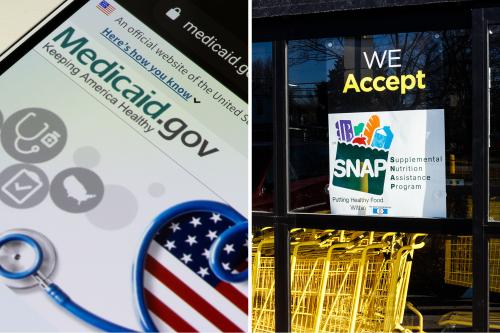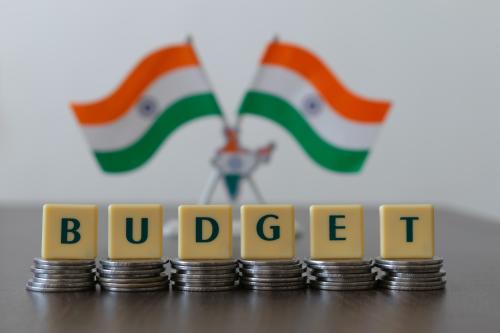State policymakers may be missing a free lunch—figuratively and literally. By declining to implement a new federal program that offers summer grocery benefits to low-income children, some states are turning away guaranteed resources that could fight hunger, support families, and boost local economies. Each summer, when schools close and free meals end, millions of low-income children face greater risk of hunger. Since 1975, the federal government has tried to fill this gap through the Summer Food Service Program (SFSP), which provides free meals at fixed sites. But logistical barriers—work schedules, travel distances, and limited awareness—have kept participation low: in July 2019, just one in seven children who received free lunch during the school year accessed a free summer meal.
The pandemic made clear that access, not demand, was the key barrier. From 2020 to 2022, Congress temporarily authorized grab-and-go meals and multi-day take-home food options, significantly boosting participation. Meanwhile, the Pandemic EBT program (P-EBT) provided over $70 billion in grocery benefits to more than 30 million children between March 2020 and September 2023. These emergency measures proved transformative: summer lunch reach jumped to 5.3 million children in 2021—a 100% increase from 2019. These successes, along with earlier USDA pilot programs from 2011 to 2018, showed that EBT-style grocery benefits could sharply reduce food insecurity and improve diets. That body of evidence helped lead Congress to establish a permanent nationwide summer grocery benefit.
In July 2019, just one in seven children who received free lunch during the school year accessed a free summer meal.
The result is Summer EBT—branded as “Sun Bucks”—a new program launched nationwide in 2024. Eligible children receive $40 per month—$120 total—over summer break, typically via their existing SNAP EBT cards and can be spent at any retailer that accepts EBT. The program operates as an entitlement, available to all qualifying children—an estimated 31 million nationwide—with federal costs projected at $3.5–$4 billion each summer.
Crucially, Sun Bucks doesn’t replace the SFSP—it complements it. Families get flexible grocery benefits, while community sponsors can continue running meal sites where they work best. Pilot evaluations show families use most Summer EBT dollars on healthy foods, and grocery benefits allow parents to shop on their own schedule instead of traveling daily to a site. The program is also low-cost to administer, avoiding the overhead of food preparation and distribution. States run the program in partnership with education and human services agencies and must cover 50% of administrative costs to receive federal funds.
In 2024, thirty-seven states, the District of Columbia, five territories, and two Tribal Nations participated in Sun Bucks. In 2025, Alabama joined the program, while Indiana and Tennessee withdrew. Texas plans to join in 2027, and several non-participating states—including Alaska, Idaho, Iowa, and Oklahoma—have signaled potential interest. States that opted out cited various reasons: limited administrative capacity and funding, reliance on existing food programs, concerns about federal requirements and short implementation timelines, and, in some cases, ideological opposition. By opting out, these states are forgoing fully funded benefits that could ease child hunger and support tens of thousands of families in their own communities.
Sun Bucks is likely to yield broad benefits. Research on SNAP, a structurally similar program, shows it reduces child food insecurity by one-third, improves reading and math scores (especially for girls), and lowers the risk of chronic conditions like metabolic syndrome later in life. SNAP recipients are more likely to graduate, earn more, and live longer—likely due to better nutrition and health. By mirroring SNAP during the summer months, Sun Bucks can reduce hunger, improve diet quality, and support school readiness—all for about 1% of SNAP’s annual cost. By preventing summer hunger, Sun Bucks may also help combat the “summer slide” and ensure kids return to school ready to learn.
By mirroring SNAP during the summer months, Sun Bucks can reduce hunger, improve diet quality, and support school readiness—all for about 1% of SNAP’s annual cost.
In conclusion, Sun Bucks is a pragmatic and powerful innovation. After fifty years of relying primarily on congregate meal service, pandemic-era pilots proved that grocery benefits are a high-impact complement. By institutionalizing that lesson, Sun Bucks delivers $120 per child to bridge the summer nutrition gap while preserving meal sites where they are effective. And beyond reducing hardship, the program’s $3.5 billion in benefits may generate over $5 billion in local economic activity each summer, supporting families, businesses, farmers, and communities alike. States that decline to participate are not just forgoing a proven strategy to reduce child hunger—they are turning down fully funded federal benefits that could strengthen their own local economies.
The Brookings Institution is committed to quality, independence, and impact.
We are supported by a diverse array of funders. In line with our values and policies, each Brookings publication represents the sole views of its author(s).







Commentary
Sun Bucks: A new chapter in the fight against child hunger
June 26, 2025